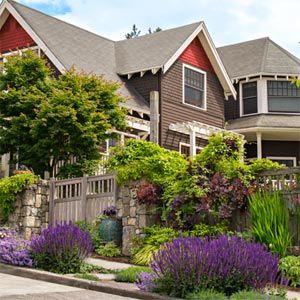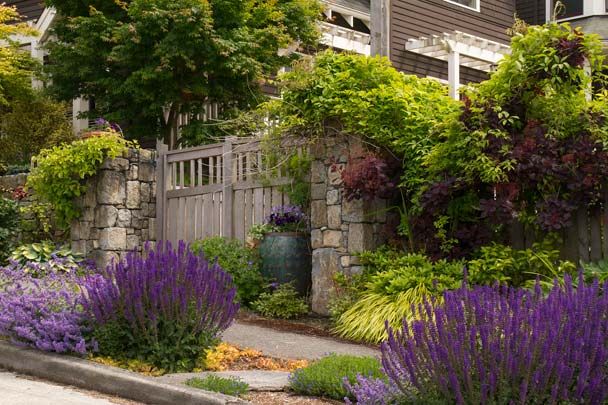
Checking out front gardens as she drove around near her home, in Saint Paul, Minnesota, Evelyn Hadden found herself focusing on the no-man’s-land between the sidewalk and curb. So often she saw nothing but “ratty little lawns.” Couldn’t they be colorful, welcoming gardens, especially since they are the first things you see when you look at a house?
Hadden answered her own question by authoring Hellstrip Gardening last year. She found that it’s possible to do something pretty spectacular with this space, which goes by plenty of polite terms, including planting strip, boulevard, and street lawn. But Hadden’s label cuts to the core of why many gardeners overlook the sliver of grass. The hellstrip is where dogs urinate, trash collects, heat from paving dries out soil, and people exiting parked cars pay little heed to what’s underfoot. Planting there is challenging, Hadden says. “But you can find something that grows a lot better than lawn and is more self-sustaining.”
Despite the obstacles, gardeners are planting hellstrips in city neighborhoods from Boston to the Twin Cities, down to suburban Tampa and west to Seattle and San Diego, swapping grass for borders packed with low-maintenance perennials, shrubs, and small trees. Some streetside gardens encourage those passing by to sit and stay awhile, with benches or water bowls for dogs. These gardens have also popped up in early-20th-century suburbs and communities where there is renewed interest in walkability. “Done well, it makes people feel good about their neighborhood and gives a street a sense of place,” says Nina Bassuk, a professor with Cornell University’s Urban Horticulture Institute. Some cities, such as Seattle, offer incentives to convert hellstrips into runoff-filtering rain gardens. In San Francisco, discounts kick in when a community shares in a block-long makeover. In Southern California towns that offer rebates for replacing lawns, hellstrips qualify.
Ready to get planting? Hellstrips are usually part of the public right-of-way, so start by checking with your municipality about permits and restrictions. To preserve sight lines, plants typically need to stay under 3 feet tall and often 2 or more feet from driveways. There are also rules for a plant’s proximity to signs, fire hydrants, and power lines. Trees generally need to stay below any power lines and to be limbed up about 7 feet so they don’t block views. Where hellstrips already include trees, Bassuk recommends keeping plants at least 6 feet from the trunks, to avoid damaging major roots, and to consider using a raised planter that drains well and is filled with a mix of soil, compost, peat moss, and perlite.
The biggest issue, though, is the planting-strip width. The narrower it is, the faster the soil dries out; and restrictions like the 12-inch-wide plant-free “courtesy strip” some cities require alongside parking spots will eat into usable space. But even a 6-inch-wide strip can look good with liriope in the warm and humid Southeast, creeping succulents in arid Southern California, violets in the cool and damp Northwest, or sweet woodruff for shade and ‘Autumn Joy’ sedum for sun in the Northeast.
Hellstrip plants face some special issues. Where winter snow piles up, they need to withstand salt. The soil is often compacted and limited in depth by the sidewalk’s base aggregate, so pick varieties that are unfussy about growing conditions. Plants that survive on rainfall alone are recommended to keep maintenance low, and they should stay naturally compact without extensive pruning. Because these strips can be right above buried utilities, make sure to call 811 before digging.
But even the littlest hellstrip gardens can have a big impact. “They contribute disproportionately to your home’s curb appeal,” Hadden says. “They also beautify your entire neighborhood and make it more welcoming for people passing by in cars, on bikes, or on foot.”
Shown: A strip once filled with a struggling band of turf is now a colorful flower patch of lavender, salvia, and low-growing periwinkle, providing both curb appeal and a lovely walk-through garden for neighbors and passersby to enjoy.

